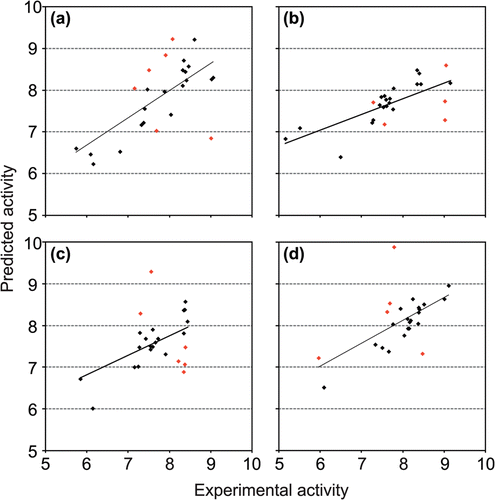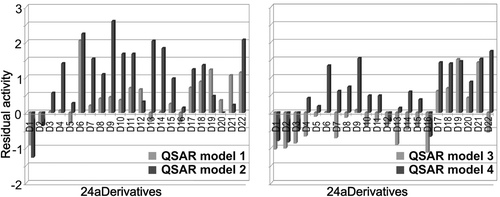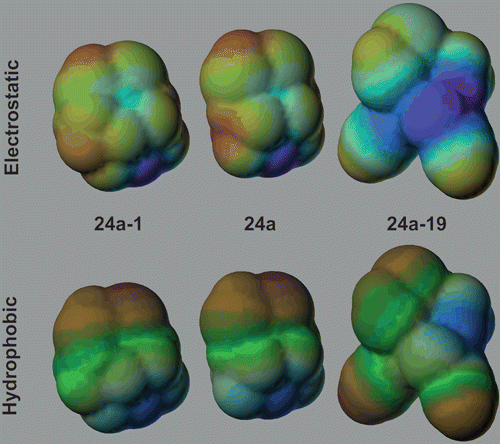Figures & data
Table 1. Chemical structures and experimental Ki and pKi of dithiocarbamates inhibitors of carbonic anhydrases hCA I, hCA II, hCA IX and hCA XII R1R2N-CSSH.
Table 2. Short description of descriptors used to predict inhibitory activity of DTCs.
Table 3. Pearson correlation matrix of independent variables.
Table 4. Summary of 2D-QSAR statistical parameters for QSAR models 1–4.
Table 5. QSAR predicted pKi of dithiocarbamates against human carbonic anhydrases and residual values for QSAR models 1-4.
Figure 1. Correlation between experimental and predicted pKi of dithiocarbamates: (a) QSAR model 1 (q2 = 0.66, r2 = 0.80); (b) QSAR model 2 (q2 = 0.70, r2 = 0.80); (c) QSAR model 3 (q2 = 0.55, r2 = 0.75); (d) QSAR model 4 (q2 = 0.73, r2 = 0.84).

Table 6. Predicted pKi of 24a derivatives, indicating inhibition against hCA I (QSAR model 1), hCA II (QSAR model 2), hCA IX (QSAR model 3), hCA XII (QSAR model 4).

